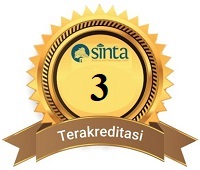Focus and Scope
Sports Training Science
Sports training science encompasses a vast array of disciplines aimed at optimizing athletic performance and preventing injuries. It integrates knowledge from physiology, biomechanics, psychology, nutrition, and other fields to design training programs tailored to individual athletes' needs and goals.
Physical Education (PE) and Sport
Physical education (PE) and sport are closely related fields that focus on promoting physical activity, health, and well-being. While they share similarities, they also have distinct purposes and approaches.
Public Health
The scientific field of public health related to sports focuses on promoting and protecting the health and well-being of populations through the lens of physical activity, exercise, and sports participation. It encompasses a range of disciplines and approaches aimed at understanding the impact of sports on public health, identifying health risks and benefits associated with sports participation, and implementing strategies to enhance population health.
Sports Biomechanics
Sport biomechanics is a multidisciplinary field that applies principles of mechanics and physics to study the motion and mechanics of human movement in sports. It involves analyzing the forces, torques, velocities, accelerations, and kinematics involved in athletic activities to optimize performance, prevent injuries, and enhance technique.
Health Sport
"Health sports," also known as "health-enhancing physical activities" or "exercise for health," refer to physical activities and sports that contribute to overall health, fitness, and well-being. These activities are designed to improve cardiovascular health, muscular strength, flexibility, balance, and mental well-being while reducing the risk of chronic diseases and promoting longevity.
Sports Therapy and Rehabilitation
Sports therapy and rehabilitation are specialized fields within healthcare that focus on the prevention, assessment, treatment, and rehabilitation of sports-related injuries and musculoskeletal conditions. These professions aim to restore function, reduce pain, optimize performance, and promote safe return to physical activity and sports participation.
Sports Medicine
Sports medicine is a branch of medicine that focuses on the diagnosis, treatment, and prevention of injuries related to sports and exercise. It encompasses a wide range of medical disciplines, including orthopedics, sports science, physiology, physical therapy, nutrition, and rehabilitation.
Section Policies
Articles
Peer Review Process
Peer Review Process Publication of articles in Jambura Health and Sport Journal (JHSJ) is dependent solely on scientific validity and coherence as judged by our editors and/or peer reviewers, who will also assess whether the writing is comprehensible and whether the work represents a useful contribution to the field. Jambura Health and Sport Journal acknowledged the effort and suggestions made by its reviewers. Initial evaluation of manuscripts The Editor will first evaluate all manuscripts submitted. Although rare, yet it is entirely feasible for an exceptional manuscript to be accepted at this stage. Those rejected at this stage are insufficiently original, have serious scientific flaws, or are outside the aims and scope of the Jambura Health and Sport Journal Those that meet the minimum criteria are passed on to experts for review. Type of peer review Submitted manuscripts will generally be reviewed by two to three experts who will be asked to evaluate whether the manuscript is scientifically sound and coherent, whether it duplicates the already published works, and whether or not the manuscript is sufficiently clear for publication. The method is double blind peer review. Decision Reviewers advise the editor, who is responsible for the final decision to accept or reject the article. The Editors will reach a decision based on these reports and, where necessary, they will consult with members of the Editorial Board. Editor’s decision is final.
Open Access Policy
This journal provides immediate open access to its content on the principle that making research freely available to the public supports a greater global exchange of knowledge. This is an Open Access journal which means that all content is freely available without charge to the user or his/her institution. Users are allowed to read, download, copy, distribute,print, search, or link to the full texts of the articles, or use them for any other lawful purpose, without asking prior permission from the publisher or the author. This is in accordance with the BOAI definition of Open Access.

















